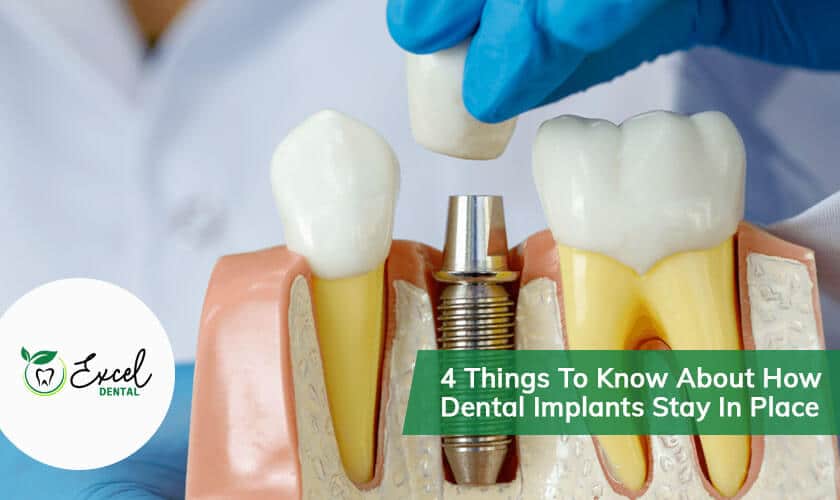Bone needs to be stimulated frequently to maintain its density and structure. The pressure applied to a tooth root during chewing typically provides the jaw bone with the most stimulation. But without a tooth, the underlying bone lacks stimulation and gradually loses its structure and density. However, the surrounding bone will keep its strength and shape if the missing tooth is replaced with a dental implant. Nevertheless, how does a dental implant remain in place? The natural fusing process of the bone holds the key. Our dentists at Excel Dental have provided more information on this blog.
What Is Osseointegration?
Similar to a screw from a hardware shop, dental implants are made with grooves. Although these grooves initially aid the implants in fusing with the bone, this is not the secret to their long-term stability. Typically, titanium—a metal that human bone naturally forms a bond with—is used to make dental implants. Following implantation, the titanium slowly fuses with the residual dental bone, much like a normal tooth’s root does. “Osteointegration” is the term for this fusion process. Three to six months of healing is necessary for this natural process, during which the healing implant needs little stimulation. As a result, the dental implant integrates with the jawbone and begins to function much like a natural tooth.
Can Implants Come Out During The Healing Process?
It is incredibly uncommon for a dental implant to fail throughout the healing phase when it is appropriately placed and cared for. In general, 98% of dental implants successfully integrate into the bone. The implant should last a lifetime once this process has matured and if good oral hygiene is maintained.
What To Avoid During The Healing Process?
Applying Excessive Pressure To The Implant
An implant that is healing could shift or become loose if it is subjected to too much or continuous pressure. Patients with dental implants are typically most susceptible to this pressure while eating hard foods throughout the healing process. Because of this, your Missouri City dentist will advise their patients to follow a soft diet while they heal. Full mouth implants reduce the risk since any pressure placed on the artificial teeth is distributed evenly throughout the prosthesis and the many implants. Single implants are more vulnerable to damage when eating challenging meals since the bite force may directly impact a single tooth. To prevent the implant from being damaged by chewing pressure, many dentists in Missouri City typically wait until the healing process is complete before placing a crown on a single implant.
Smoking
It is advised that you give up smoking to maximize the effectiveness and durability of your implant treatment with our Missouri City dentist.
What Happens If A Lot Of Bone Is Lost?
In a socket with excessive bone loss, an implant cannot be inserted. The underlying bone must first be restored through a bone grafting procedure to replace a single tooth. Your dentist in Missouri City will stitch the overlaying gums after placing bone graft material in the socket. Before the implant can be inserted, the bone graft needs to cure for a few months. A full-mouth treatment does not require bone grafting. For an entire arch of implant-supported teeth to be effectively implanted, the surgeon often only needs to place four to six implants on each jaw. Only four to six pockets of suitably dense bone are required. Even in cases of severe bone loss, implants may typically be inserted since the lower jaw is thick enough. Your Missouri City dentist can place zygomatic implants that embed in the zygoma (cheekbone) to offer adequate support if a patient has substantial bone loss in their upper jaw.
We hope this blog has provided you with adequate information. Book an appointment with us at Excel Dental for the best dental implants in Missouri City, TX.


